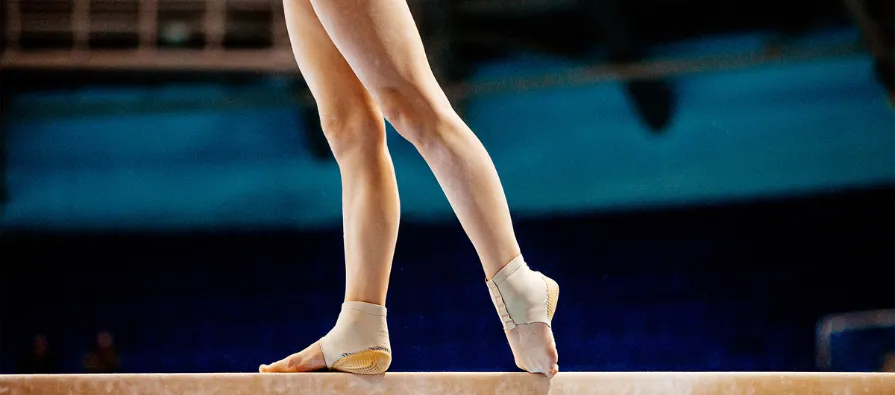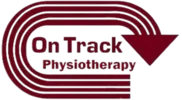On Track Physiotherapy
Dance & Gymnastics Injuries in Ann Arbor

Finding Relief from Dance and Gymnastics Injuries
Dancers and gymnasts push their bodies to awe-inspiring feats of flexibility, strength, and artistry. But behind the grace and beauty lies intense training regimes that put extreme physical demands on athletes’ bodies. This often leads to painful and disruptive injuries that can halt promising careers.
At On Track Physiotherapy, we understand the frustrations of dance and gymnastics injuries. We have helped many dedicated athletes find relief, restore mobility, and return safely to the activities they love. Led by our highly experienced physical therapist Dr. Greg Schaible, DPT, our team utilizes advanced therapeutic techniques to get you back on stage or in the gym.
Common Causes of Dance and Gymnastics Injuries in Ann Arbor
Dance and gymnastics injuries generally fall into two categories:
Overuse Injuries
Repetitive movements and intense training sessions take a cumulative toll. Gymnasts attempting challenging skills hundreds of times and dancers rehearsing for hours build immense strength — but also strain joints, tendons and muscles past capacity.
Common overuse injuries we treat include:
- Ankle sprains and foot stress fractures
- Knee tendinitis
- Hip flexor strains
- Shoulder rotator cuff tears
- Lower back muscle spasms
Traumatic Injuries
Failed skill attempts and awkward landings often cause sudden injuries. A single mistimed jump or unsteady balance beam dismount can lead to:
- Bone fractures
- Tendon and ligament tears
- Sprains and dislocations
- Head and spinal cord trauma
Younger athletes specializing early and attempting advanced skills face higher risks. But even seasoned veterans remain vulnerable to traumatic mishaps.
Customized Recovery Plans
We tailor therapy programs to each patient’s unique injury, activity goals, and risk factors. Treatments target both recovery and future injury prevention.
Pain Management and Healing
Our first priority is always alleviating pain and facilitating healing. We utilize techniques like:
- Manual therapy to improve joint mobility and reduce muscle spasms
- Modalities like ultrasound, electric stimulation, and cold laser decrease inflammation
- Targeted stretches and exercises to gently activate the healing process
The proper balance between rest and gentle movement accelerates recovery and prevents complications like scar tissue build-up.
Restoring Mobility and Function
As pain subsides, we focus on carefully restoring range of motion and strength. This requires correcting any muscle imbalances or movement compensations adopted to avoid pain.
Our programs retrain proper technique with activities like:
- Progressive stretching focuses on tight, overused muscle groups
- Targeted strengthening exercises using resistance bands, pilates equipment, or bodyweight
- Simulated dance and beam/mat routines to practice skills pain-free
The goal is full functionality allowing a safe, confident return to sports without thinking about the injury.
Improving Biomechanics and Preventing Re-Injury
While recovering, we perform thorough movement analyses to identify deficiencies and faulty mechanics. Customized exercises and drilling of proper technique prevents future issues. For example, after an ankle sprain we might identify tight calf muscles causing poor landing mechanics. Focused stretching and retraining jump landings would prevent repeat issues.
We also educate athletes on smart training habits. Proper rest and nutrition, sufficient warmups and cooldowns, and avoiding overtraining are key to staying healthy.
Ongoing Injury Prevention and Management
Even after formal therapy ends, we remain a trusted resource. We equip athletes with customized stretches, strength exercises, and self-treatment techniques. Recommendations like braces, tape, foot orthotics, or supplemental joint lubrication provide extra support during demanding performances and practices.
Regular check-ins help to assess techniques and adjust prevention protocols to minimize injury recurrence. We take a team approach, working closely with coaches and trainers to integrate injury prevention into overall training plans.
Frequently Asked Questions
What are the most common gymnastics injuries?
The most frequently injured body parts are the ankle, knee, lower back, shoulders, and wrist. Ankle sprains lead the list, accounting for up to 1/3rd of all injuries. These often occur while awkwardly landing tumbling passes or dismounts.
What types of injuries are common among dancers?
Foot and ankle tendonitis are extremely prevalent, especially in styles emphasizing jumping like ballet or hip hop. Knee issues and lower back spasms are also frequently reported as these areas withstand tremendous forces. Shoulder instability and cervical spine dysfunction can result from intensely using the upper body.
Can you explain what overuse really means?
Overuse means repeatedly placing strain on tendons, muscles, bones, and joints without adequate rest and recovery. Tiny micro-tears accumulate until distinct injuries like stress fractures or rotator cuff tears suddenly appear. It’s like bending a paperclip back and forth until it unexpectedly snaps.
As a dancer, what are the two most likely overuse injuries I may face?
Most dancers experience ankle tendonitis like Achilles tendonitis or posterior tibial tendon dysfunction. These delicate tendons become extremely irritated but rarely tear completely. Ballet dancers also often develop foot and ankle stress fractures from repetitive landings and twisting motions.
Start Healing Today
If you’re struggling with nagging pain or a more severe injury, we can help. Dr. Morgan Kennedy brings experience working with high-level dancers and gymnasts. We customize programs to fit your unique needs and abilities with the goal of helping you regain health and reach your athletic potential.
To schedule an appointment at our Ann Arbor office or ask questions, please call 734-972-6529 or click here today. We look forward to helping renew the grace, artistry, and passion dance and gymnastics brings to your life.
About The Author
Dr. Greg Schaible is a licensed Physical Therapist specializing in Certified Strength & Conditioning and Sports Rehab. With years of experience in the field, Dr. Greg Schaible has dedicated his career to helping patients achieve their maximum physical potential and improve their quality of life. Currently practicing at On Track Physiotherapy in Ann Arbor, Dr. Greg Schaible employs a patient-centered approach, combining cutting-edge techniques and personalized care plans to address a wide range of physical conditions.


